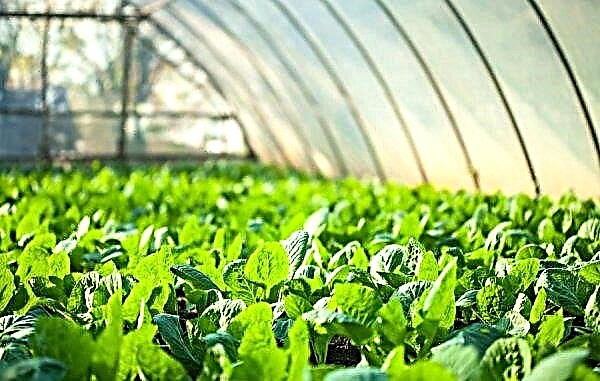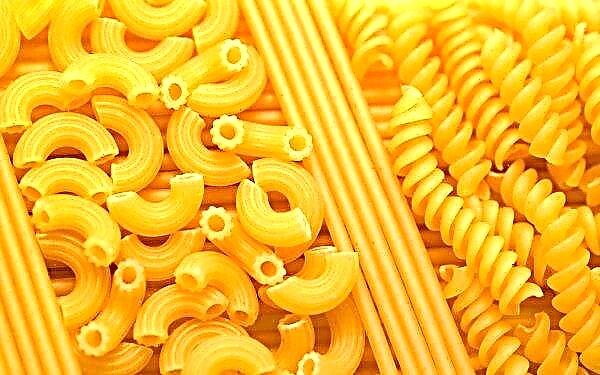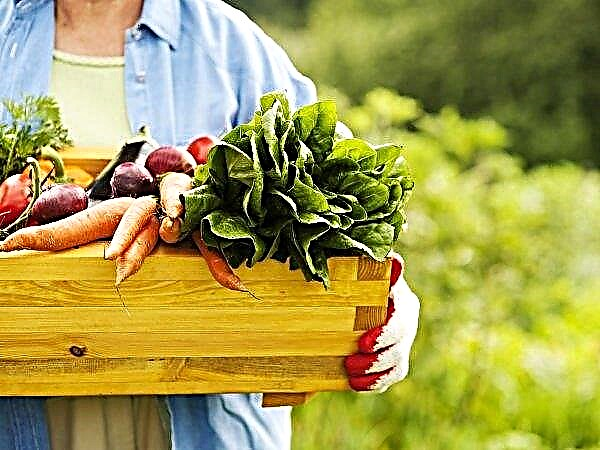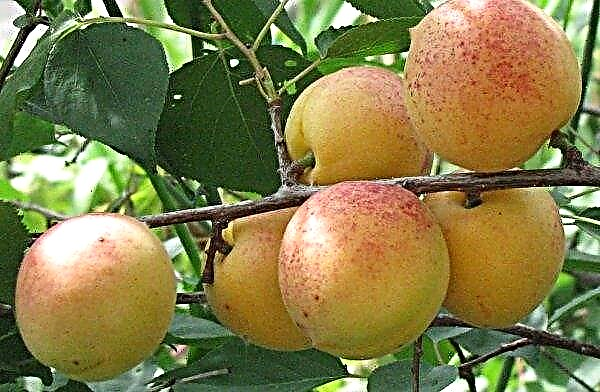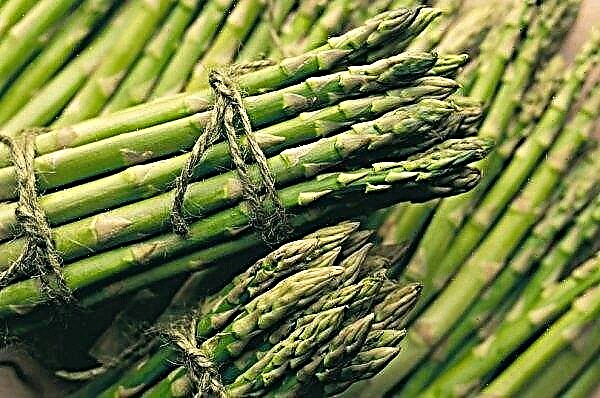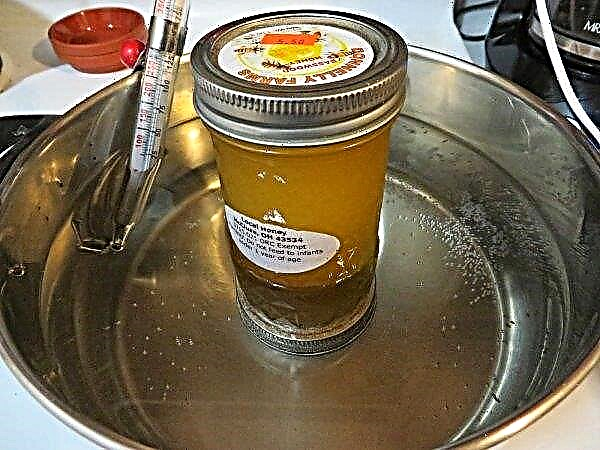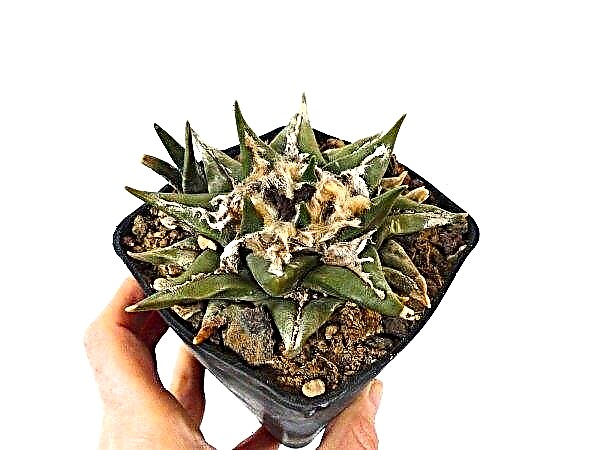By the ripening speed, all tomato varieties can be divided into ultra-early, early, mid-early, mid-ripening and late-ripening. Among them, the most suitable for planting in cold regions are ultra-early, as their fruits can ripen in short daylight hours. One of these varieties, Aphrodite F1, will be discussed in the article.
Grade description
Main characteristics:
- ultra early variety (75–80 days elapse from sowing to ripening, but up to 100 days, depending on the region of growth);
- indeterminate bush, medium height (maximum 1.5 m) with abundant vegetation;
- many leaves and they are large, often located;
- spreading bush, he needs room and regular stepson;
- in each inflorescence is formed by 3-4 ovaries;
- bright red fruits, with a glossy sheen, painted uniformly (without a spot on the tail), have a rounded shape;
- sweet fruit pulp, juicy, medium density;
- on average, one Aphrodite F1 tomato weighs 100–115 g;
- disease resistant fruits (late blight, columnar, Fusarium wilting) and pests (attacked only by the Colorado potato beetle), are well transported;
- bushes give harvest 14-17 kg / sq. m in greenhouses and 8-10 kg / sq. m in open ground;
- in greenhouses and greenhouses grown only in regions with short summers, in the rest - in the open ground.
Important! A tomato Aphrodite F1 can be grown on the balcony.
Advantages and disadvantages
- The positive characteristics of the variety include:
- fast and simultaneous ripening of fruits;
- identical fruits are formed on one brush;
- the fruits tolerate transportation well, are not bad stored;
- resistant to many pests and diseases;
- good taste;
- ripe fruit does not crack;
- high yield;
- It easily tolerates high temperatures and low humidity.
- The disadvantages are:
- the need for garter and constant herding;
- some exactingness to temperature conditions;
- need for constant feeding.
Features of growing seedlings
Aphrodite seeds can be bought at the store or prepared by yourself if you have grown this variety before. Procurement is carried out in this way:
- The ripe fruit is cut and the seed is removed from the seed chambers.
- The seed is placed in heat for two days until it begins to ferment.
- Seeds are washed under water and dried.
- Dry seeds are rubbed between the fingers and poured into paper bags.
- Next, the seeds are stored in a dry, cool room.

Optimal timing
Sowing is carried out from March 15–20 to the first of April. The later you sow the seeds, the faster the seedlings will appear and the seedlings will grow. Therefore, it is necessary to estimate that from the time of sowing to planting in the soil you have 45–55 days. Keeping seedlings indoors for longer than 60 days is not recommended, as it will weaken.
Soil mix
You can use universal soil by mixing it with peat in a ratio of 1 to 10. Or you can prepare a mixture of 5% peat, 20% universal soil, 30% steamed garden soil, 10% biohumus, 4% perlite, 1% vermiculite. Before planting, the soil must undergo a decontamination procedure using low temperatures.
To do this, it is placed for a week in conditions with a temperature of -15 ° C and below, then for a week in room conditions and again in the cold. After the last cooling, another seven days should pass before the soil thaws and is ready for sowing.
Capacity for growing
From containers it is better to give preference to plastic or wooden boxes of any sizes.
Seed preparation
First, the seeds are sorted: for this, they are immersed in a 5 percent salt solution for 15 minutes. During this time, empty seeds will emerge, and the full ones will settle. Then, the seed is disinfected in a solution of potassium permanganate (up to 12 hours). At this time, a container with seeds is best placed in the refrigerator under the freezer, in order to harden them.
Did you know? The first Europeans to describe the tomato were Italians. It happened in 1555. They called him here «remember doro», What means «Golden Apple».
Sowing seeds
Procedure:
- In the container selected for seedlings, small charcoal (drainage) is poured onto the bottom and sprinkled on top with a substrate.
- On its surface, with an interval of three centimeters, grooves are made, with a depth of one centimeter.
- The soil is slightly irrigated from the spray.
- Seeds are laid in the grooves at a distance of 2–2.5 cm from one another and are slightly pressed into the ground.
- From above, seeds are sprinkled with dry soil with a layer of half a centimeter.
- Then the soil is slightly compacted and the container is covered with a film.

Seedling Care
Seedlings are placed in a warm place with a temperature of 28-30 ° C. As soon as the first shoots appear, the film is removed, the temperature drops to 15–18 ° C during the day and 10–12 ° C at night, and the container is transferred to a bright place. Lighting should be around the clock 3-4 days, then enough 14-16 hours.
A week after the emergence of seedlings, the daily temperature should be raised to 20–25 ° C, and the night temperature to 12–15 ° C. Watering is carried out regularly - once every few days, and in the heat - every second day. Seedlings are fed 1-3 times with calcium nitrate (1 teaspoon per 1 liter of warm water). When 3-4 true leaflets appear, they pickle the seedlings.
Seedling hardening
They begin to harden seedlings one and a half to two weeks before planting in the ground. It can be temporarily taken outside, or simply lower the temperature for several hours: during the day to 13–15 ° C, and at night to 6–8 ° C.
Planting seedlings in a permanent place
Seedlings are ready for planting in open ground in 50-60 days from the moment of emergence of seedlings. At this point, night frost should stop. On one square meter, no more than four bushes are planted according to the scheme 40 * 50 cm or 60 * 60 cm.
Important! Before planting, it is necessary to pin the central root of the seedlings so that it gives the lateral processes.
Outdoor Care
For a good crop, the plant needs careful care.
Watering
Watering should be regular and plentiful. In cloudy and non-hot weather, it is enough to irrigate plants once a week. In hot - three times. Watering is carried out with warm, settled water under a bush or in a hole.
Top dressing
The plant is fed three times: immediately after planting in the ground, during the flowering period, with the appearance of the first ovaries. Complex fertilizers are used.
Stepson
For good productivity, the bush is formed in three to four stems. Young shoots are removed every week.
Soil care
After each watering, it is necessary to fluff up the soil near the bush so that the moisture lasts longer in it. Periodically loosening the aisle. Weeds are removed as they appear. Mulch is optional.
Bush tying
When planting seedlings in the soil, a peg is immediately driven into the hole, a bush is tied to it. As it grows, it is additionally tied up several times so that under the weight of the fruit the plant does not bend down. This will avoid damage to the fruit and injuring the bush.
Preventative treatment
Breeders have made the Aphrodite F1 hybrid resistant to most common diseases and pests. But still, as a preventive goal, processing with a Bordeaux mixture will not hinder. From a single pest, the Colorado potato beetle, can prevent the planting of tomatoes far from potatoes, regular inspection of bushes for the presence of beetle larvae and preventive treatment with drugs against this pest.
Did you know? Annually, in the last week of August, La Tomatina is being held in the Spanish city of Bunyol, a celebration for people from many countries to gather tomatoes to leave each other.
Harvesting
From a hectare of open soil planted with this hybrid, you can collect up to 100 tons of tomatoes. They all ripen almost simultaneously, which greatly simplifies harvesting. So, “Aphrodite F1” is an ultra-early tomato variety that, although a bit capricious, is easily grown. Its early maturity and maturation in short daylight conditions allow you to grow a crop even in an apartment on the balcony. This feature cannot but please amateur agronomists.
So, “Aphrodite F1” is an ultra-early tomato variety that, although a bit capricious, is easily grown. Its early maturity and maturation in short daylight conditions allow you to grow a crop even in an apartment on the balcony. This feature cannot but please amateur agronomists.

